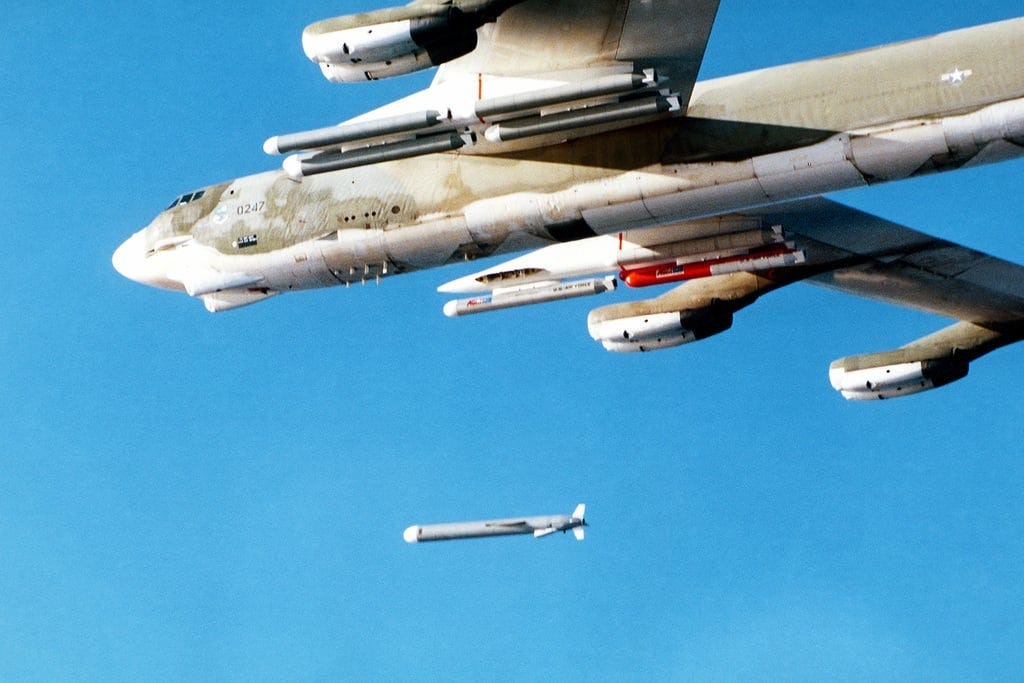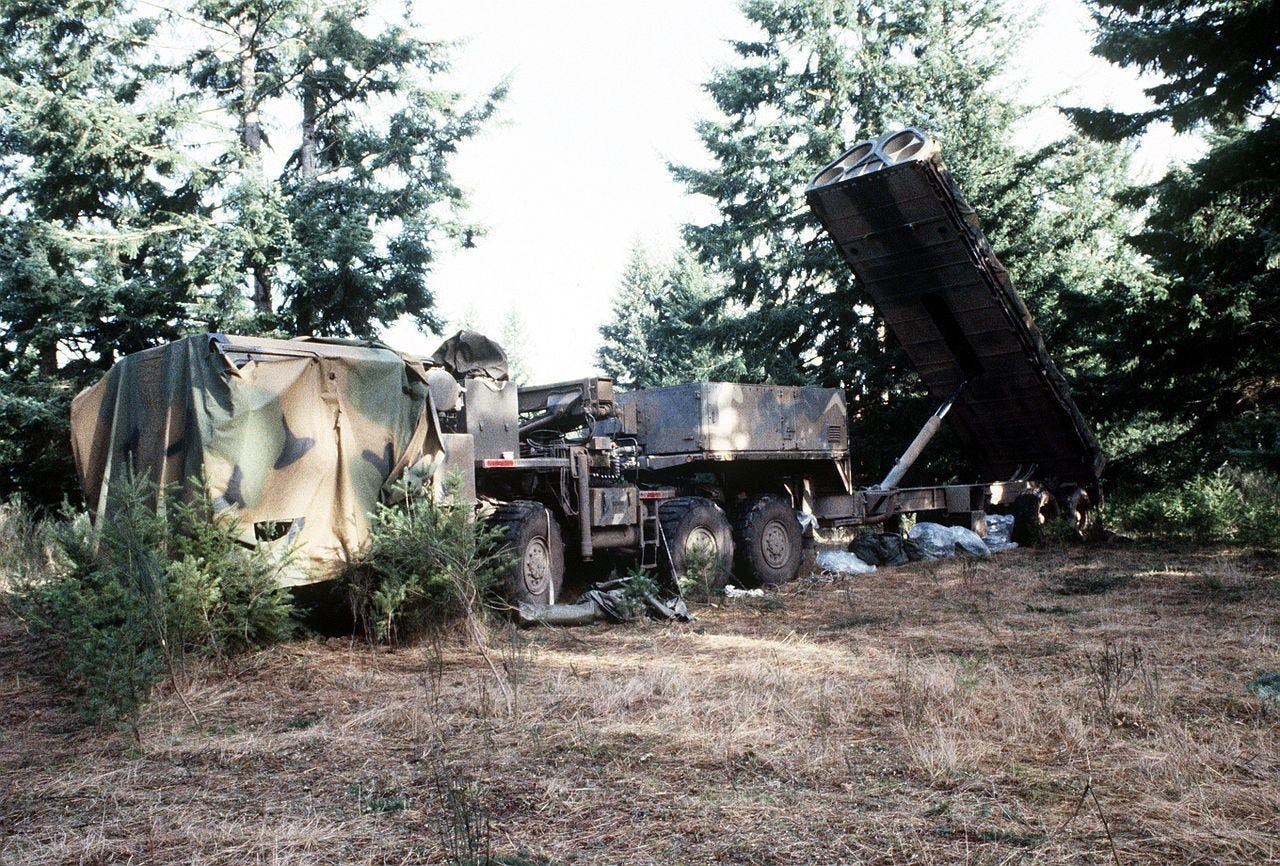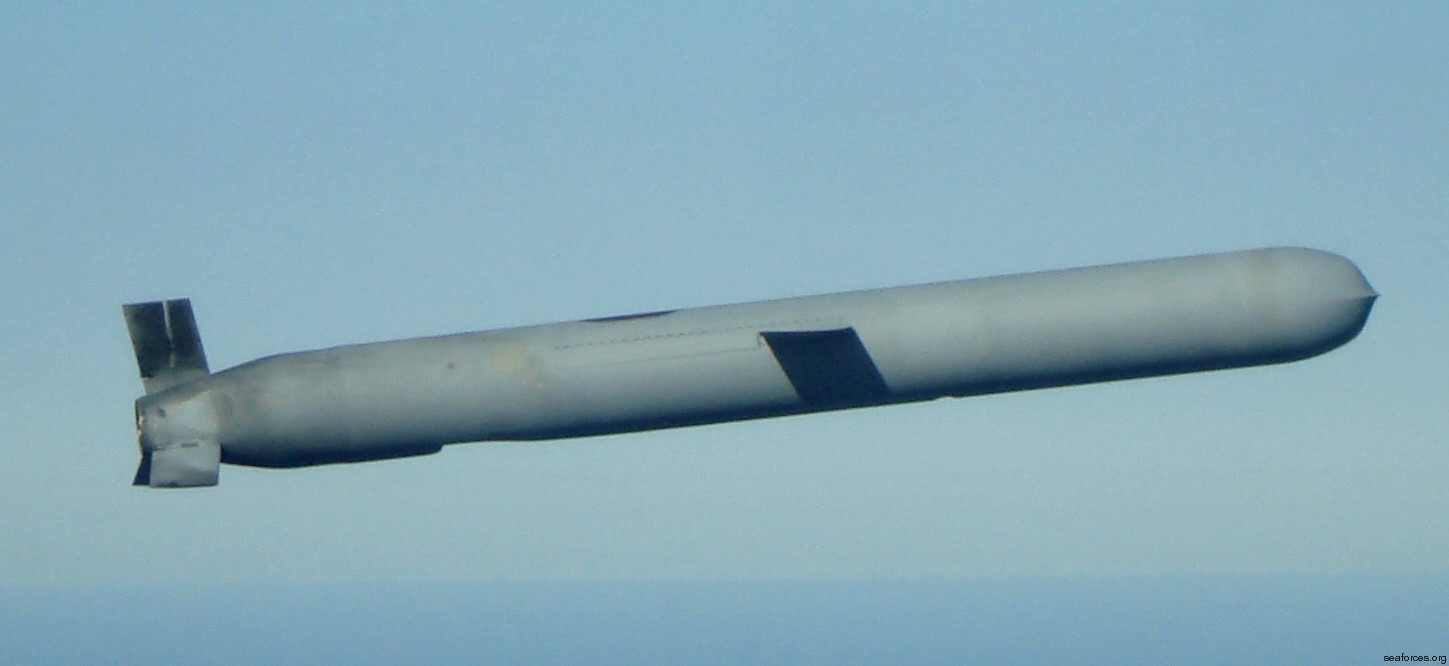Hello everybody!
While sitting and waiting for yet another doc to do his part, here a ‘quick and dirty’ reply to a number of questions related to rumours about possible delivery of ‘Tomahawk cruise missiles to Ukraine’.
***
1.) The fact Dumpf might be thinking about providing any kind of advanced weaponry to Ukraine, doesn’t mean he’s now ‘pro-Ukraine, after all’. It only means he’s found a way to offer making favours to diverse (rich) buddies and (rich) supporters through arms exports paid by Europeans. That’s not making Dumpf ‘pro-Ukraine’, and even less so ‘anti-Pudding’. The least of all ‘reliable’. That’s only making him as greedy and as treacherous as he always was.
***
2.) Originally (that was back in the late 1970s and early 1980s), there used to be three principal variants of the Tomahawk cruise missile:
AGM-109 = air-launched version: this lost to the AGM-86 ALCM, which was acquired by the US Air Force, and was never manufactured in quantities.
BGM-109 = land-launched variant equipped with a nuclear warhead. Was retired from service back in the 1990s (the last BGM-109As were retired in the early 2010s).
RGM-109 = (also UGM-109) original submarine-launched, anti-ship variant with active radar seeker.

An air-launched AGM-109 as seen shortly after release from a B-52 bomber, during testing, back in the 1980s. The USAF went for the ‘stealthy’ AGM-86 instead - even though this had quite a poor reliability rate when deployed for first time in combat (against Iraq, in 1991).
In the 1990s, once the Cold War was over and the USA began playing the World policeman, lots of old BGM-109s and RBM-109s were completely rebuilt. Usually into the BGM-109D, best known as the ‘Tomahawk Land Attack Missile’ (TLAM), launched from warships of the US Navy (some were also exported to Australia, Japan and the Netherlands). Additional were re-built into RGM-109E submarine-launched versions - for attack submarines of the US Navy, and (a total of 150) the Royal Navy.
***
3.) If the USA would deliver any kind of Tomahawks to Ukraine, then their land-launched variant (simply because Ukraine neither operates any aircraft really suitable for the non-existent AGM-109, nor any warships or subs suitable for sea-launched BGM- and sub-launched RGM-109s, respectively).
A land-launched variant would require suitable ‘transporter-erector-launchers’ (TELs), like this trailer towed by a MAN KAT 8x8 truck, as was standard in the Tomahawk-equipped squadrons of the US Air Force of the 1980s:

Problem: I doubt any of these are still around.
Sure, some 6-7 years ago, the Pentagon announced it’s developing a new launcher, but no idea how far was that project pursued (was it ‘Typhoon’ or something else of that kind?). Thus, the first problem would be that of developing a suitable launcher, and then manufacturing it in sufficient numbers… and then creating suitable units: back in the 1980s, standard US Air Force BGM-109G-equipped squadron included several flights, each with two launch-control vehicles and four TELs (usually totaling 16 missiles per flight).
***
4.) As next, there’s the issue of availability. Sure, the latest variants of BGM-109 and RBM-109 - TLAM Block IV and Block V - are still in production. But, in ‘low-rate’ production; barely enough to keep the US stocks at around 3,000+ missiles (minus whatever was lately spent against Yemen and Iran). With other words: the stocks of TLAMs kept in the USA were low already years ago, and that didn’t improve by any important margin in the last three years. It would take the USA ‘years’ to manufacture enough to enable ‘sizeable’ deliveries - just like it’s taking the USA years to manufacture all the SM-6, Patriot- and THAAD-interceptors spent the last 2-3 years (whether through donations to Ukraine, or for saving Israel, or for fighting a hopelessly pointless war with the Houthis, on behalf of Israel)…. or like the British stocks of Storm Shadows and the French of SCALP-EGs were nearly-exhausted…
Means: any deliveries to Ukraine would be minimal: far from what Ukraine would realistically need - which would be, say, at least 1,000… and the more the merrier: because the more the Ukrainians could deploy in the first few days/weeks of their arrival, the more damage would they cause. Subsequently, the Russians would adapt to the new threat, just like they did to everything else ‘the West’ has supplied so far.
***
5.) Furthermore, there is no way the USA - and that regardless if under Dumpf or any kind of a ‘Democrat’ instead of him (should there ever be elections in the USA) - would ever entirely remove all the limitations upon deployment of such weaponry like Tomahawks against targets in the Russian Federation. They would always insist on having the final say regarding the target selection (probably also the number of rounds fired at once), just like they were doing that already in the case of Storm Shadows (and couldn’t in the case of French-made SCALP-EGs).
(I simply do not understand why are people still daydreaming about the US arms coming without any kind of ‘political strings attached’? The USA were all the time acting that way, ever since the Marshal Plan - while blaming the USSR of behaving that way. Only simpletons in regards of contemporary military history are still thinking anything else.)
***
6.) Finally, ‘even if’... Tomahawk might be more precise than, say, Ukrainian-made Flamingo, but: they are still subsonic and thus as ‘easy’ to detect, track, and shot down as the Russian-made Kh-101s or Kalibrs. I.e. their survivability is only minimally better.

A still from a video showing a TLAM-D in-flight. Notable is the ‘stealthised’ nose, designed to further reduce its (already quite low) radar cross-section. Another important detail is that its jet engine is ‘hidden’ from the radar through its installation inside the fuselage: for comparison, that of the Kh-101 is hanging under the fuselage, and - as seen from the front - easily detectable by radar. This is about the primary advantage of the BGM-109 vis-a-vis its Russian pendants like Kh-101 and Kalibr.
Why is this important?
Because, presently, mere 1-3% of Ukrainian UAVs and missiles ‘unleashed’ upon Russia in a single wave - are getting through the Russian SAM-belt along the border. Sure, these 1-3% are often scoring telegenic hits, causing lots of fire and smoke (at least when hitting some refinery), but: they’re simply not enough. I strongly doubt this would change that much, even if the USA would go as far as to equip Tomahawks with ECM and chaff & flare dispensers (like the Russians did with their cruise missiles)… and the likelihood of the USA equipping any kind of Tomahawks destined for Ukraine with towed decoys… sigh: is as high as they might ever do so with Ukrainian F-16s.
***
7.) Actually, ideal would be for Ukraine to get something air-launched and then flying ballistic out to a range of around 1,000-1,500km. And then something that could be launched from jets like F-16 or Mirage, or at least from Su-27.
The last I’ve heard about such topic, though, not even the Ukrainian Air Force is thinking in that direction, not to talk about its holly, wise, and so endlessly efficient government.
(Arguably, in this regards, Ukraine is not much different to the mass of European air forces.)
***
With other words: like M142 HIMARS, then Leopard 2 and then M1 Abrams main battle tanks, then F-16s etc… no: even should any ever reach Ukraine, Tomahawks are extremely unlikely to become anything like ‘war-winning weapons’.
This text is published with the permission of the author. First published here.